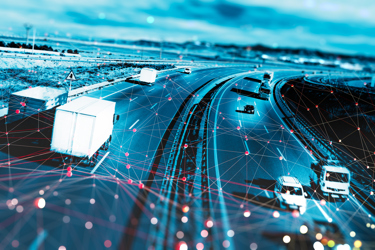LIDAR And ADAS: Two Great Technologies That Go Great Together

By John Oncea, Editor

Advanced driver-assistance systems (ADAS) and the autonomous vehicles (AV) they enable depend on sensors to function safely and efficiently. LIDAR, due to its ability to create a 3D map of the surrounding area that allows for the detection of spatial position, velocity, and surrounding objects, is a crucial technology contributing to the development of ADAS and the growing popularity of EVs.
The development of autonomous vehicles (AVs) is heavily reliant on LIDAR technology. As AVs and advanced driver assistance systems (ADAS) become more popular, the automotive LIDAR market is projected to reach $8.4 billion by 2033, according to IDTechEx’s report LIDAR 2023-2033: Technologies, Players, Markets & Forecasts.
Sure, cameras, radars, and ultrasonic systems are also playing a role in the development of ADAS, but each of these alternatives comes with certain downsides. “Cameras offer color and high-definition images but suffer from poor depth information and can be easily affected by the sun and other poor weather conditions,” writes Yahoo! Finance. “Ultrasonic systems are very cheap but have a very short detection range. Radars are quite robust to bad weather conditions but give very poor resolution. The typical 2-3° angular resolution (e.g., 2° at 100m cannot distinguish a distance larger than 3.4m) of radar makes most object detection challenging.”
LIDAR, however, compensates for the other sensors’ disadvantages by “seeing in the dark, providing high resolution (e.g., 0.1°) and information not easily affected by the light condition. Unlike ultrasonic sensors, LIDAR sensors can detect objects at longer distances and in a wider field of view. LIDAR systems emit their light, making them less susceptible to interference from external sources such as sunlight, fog, or rain.”
LIDAR’s Role In Developing ADAS, AVs
ADAS based on LIDAR is the most innovative and efficient technology for AVs writes eInfochips. In fact, without LIDAR, a fully automated self-driving vehicle is “impossible.”
“Self-driving cars equipped with LIDAR sensors offer complete automation under all driving modes,” eInfochips writes. “LIDAR-based ADAS systems along with vision and RADAR-based sensors take complete control over the vehicle, managing the speed and steering control, thereby providing a remarkably safe driving experience.”
LIDAR sensors are typically mounted at the top of a vehicle and rotate continuously, emitting thousands of laser pulses per second. These laser beams are rapidly sent out in all directions around the vehicle and bounce off any objects they hit. Machine learning algorithms are then used to process the data collected by the sensor, producing real-time 3D graphics that can be displayed as either 3D maps or 3D images of the surrounding objects.
LIDAR sensors can be classified into two categories based on the technology in use, Electro-Magnetic and Solid State.
Electromechanical LIDARs are the original LIDAR systems used for automotive applications and use multiple moving parts to create and emit laser beams toward a targeted area. However, they are quite bulky, expensive, and prone to wear and tear in rough terrain. They are usually installed on the top of the vehicle and continuously rotate to scan the surroundings of the vehicle, covering a long range.
Solid-state LIDARs are built entirely on a single chip and are very compact, lightweight, and cost-efficient. Since there are no moving parts, they are fixed in the rear, front, and sides of the vehicle. “Solid state LIDARs have optical emitters, which send a burst of laser photons without having to adjust the direction of the transmitters,” eInfochips writes. “The light, emitted in specific patterns, collides with the objects in the way and bounces back to the system’s receiver. The processor in the LIDAR system fetches this data constantly and produces a real time 3D map of the vehicle’s surroundings.”
“The use of a laser beam does, however, bring about some significant technological challenges,” EE Times writes. “On the one hand, the laser proves to be a high-resolution source, able to fully exploit this property and meticulously reconstruct the morphology of the environment through a scan.
“On the other hand, there is a requirement for high mechanical precision and pulse speed of the order of nanoseconds. Additionally, the system needs more energy because laser light does not have the same high coefficient of reflection as radar electromagnetic waves, which results in higher energy requirements.”
To avoid overheating, the laser light beam and duty cycle should be kept low, since they are generated by large currents passing through LEDs, often in the range of tens of amperes. The high pulse speed and energy demand of the system's electrical components require a significant amount of power, which presents design challenges when trying to increase the system's power.
LIDAR technology is moving toward functions and designs tailored for various applications and meeting automotive industry standards and cost factors may be just as crucial as ensuring optimal LIDAR performance. It is expected that LIDAR technology will further enhance its resolution, range, and accuracy, allowing for more efficient detection and navigation in complex environments. This will play a vital role in the advancement of AVs and other applications dependent on LIDAR technology.
